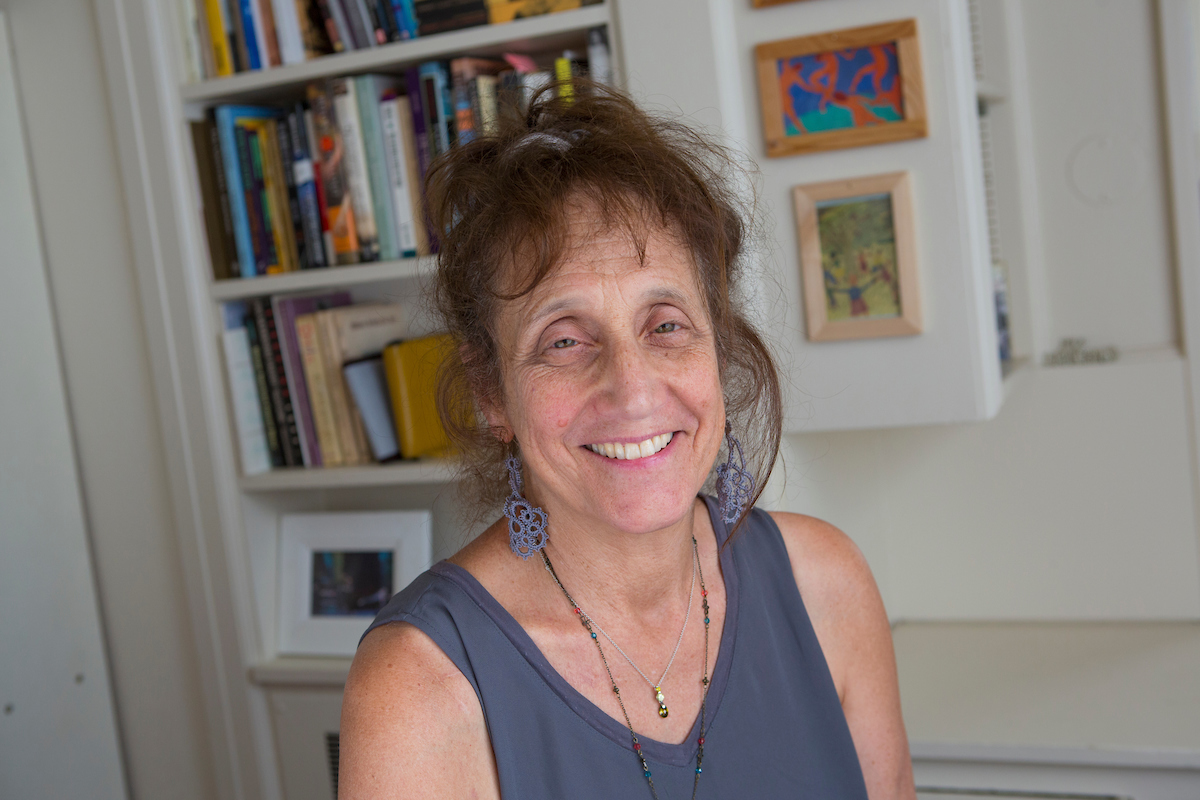International conference at ASU to explore themes of Jewishness in dance

How would you dance with a Yiddish accent? Or express the tensions of Jewish-Arab relations through movement?
Arizona State University is holding an international research conference this month called “Jews and Jewishness in the Dance World” that will touch on dozens of these kinds of topics. More than 100 presenters from eight countries will gather for four days of events starting Oct. 11, including discussions, performances, dance labs, a film series and a book reading.
Naomi Jackson, an associate professor in the School of Film, Dance and Theatre in the Herberger Institute for Design and the Arts, said she is organizing the conference now because of an interesting confluence of old and new at the moment. The “old” refers to the end of the previous generation of Jewish people, brought home to her most keenly when her father died a few years ago.
“That generation represented, for me, an artistic and intellectual legacy of Jewish culture that is incredibly powerful,” she said.
“I wanted to honor it because it’s in danger of disappearing because of the high rate of intermarriage. It’s a legacy that I wanted to honor and preserve,” said Jackson, who also is affiliated with the Center for Jewish Studies at ASU, which is the main sponsor of the conference. The event is free and open to the public, but registration is required.
The “new” refers to a dance form called Gaga, developed by Ohad Naharin, the artistic director of Batsheva Dance Company in Israel.
Trailer for "Mr. Gaga," a documentary about Ohad Naharin
“It has spread like wildfire across the dance community and the world,” she said. “Gaga is becoming the ‘in’ technique. This is what’s hot now."
Jackson said the conference will consider the ways Jewish people have impacted dance.
“The Jewish contribution, to especially modern dance and postmodern dance, hasn’t been identified and named. It’s been there, but it’s been invisible,” she said.
Much of the impact has revolved around the Jewish notion of “tikkun olam” — the idea of healing the world through good works.
“How this played out is that many of the pioneers in dance therapy and community dance are Jewish. A lot of them say they went into these fields because of this idea of repairing the world and of social justice,” she said.
Liz Lerman
Liz Lerman, an Institute Professor in the Herberger Institute, is a pioneer in community dance, having founded the Dance Exchange to engage different kinds of people in dance. Lerman, a choreographer, performer and writer, will curate a performance on Oct. 14 and then participate in a discussion about what it means to “dance Jewish.”
Other sessions will include “Dancing Their Identity: Orthodox Women Shaping a New Path in Education,” “Ballet and Jewishness” and “From Victimized to Victorious: Re-Imagining Identities Through Dance.”
The conference will address complicated questions, Jackson said. One session will include Adam McKinney, an assistant professor of dance at Texas Christian University and a former performer with the Alvin Ailey American Dance Theater.
“He’s black, he’s Jewish, he’s gay and he’s orthodox,” she said. “His session is about what it means to be all those complex things today.”
Another session will be a moderated fishbowl about the politics of Israeli folk dance, which Jackson anticipates could be contentious.
“I know there will be places of conflict, and I don’t want to avoid that.”
Top photo: Naomi Jackson, an associate professor in the School of Film, Dance and Theatre, is organizing the "Jews and Jewishness in the Dance World" conference at ASU's Tempe campus this month. Photo by Deanna Dent/ASU Now
More Arts, humanities and education

ASU instructor’s debut novel becomes a bestseller on Amazon
Desiree Prieto Groft’s newly released novel "Girl, Unemployed" focuses on women and work — a subject close to Groft’s heart.“I have always been obsessed with women and jobs,” said Groft, a writing…

‘It all started at ASU’: Football player, theater alum makes the big screen
For filmmaker Ben Fritz, everything is about connection, relationships and overcoming expectations. “It’s about seeing people beyond how they see themselves,” he said. “When you create a space…

Lost languages mean lost cultures
By Alyssa Arns and Kristen LaRue-SandlerWhat if your language disappeared?Over the span of human existence, civilizations have come and gone. For many, the absence of written records means we know…


